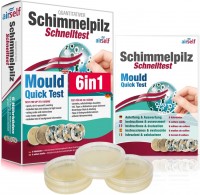Drinking water in second homes: What to look out for
Stagnant water in drinking water pipes always occurs when a pipe or part of a pipe has not been flushed for a long time. An effect can already occur after a few hours, but after a week at the latest, you should not drink the water from the tap directly, but at least flush it a little.
Holiday homes and second homes are particularly affected by this due to their irregular use.

What is stagnant water?
Water that does not move for more than 4 hours is already called stagnant water. However, it usually only becomes a problem after a few days. This can occur in dead ends of the water pipes, storage tanks or even rarely used parts of the installation. Or if the water is not used for a longer period of time, such as in second homes.
Especially on outside taps, frost-proof valves are often installed so that the pipe does not have to be drained in winter. These parts of the pipe then lie still in winter, but are still connected to the house installation.
If the water exchange is not given for longer time periods, a biofilm can form on the surfaces. This is a coating of bacteria and sometimes algae.
What kind of problems can arise from this?
Stagnant water provides an ideal habitat for bacteria
Stagnant water pipes, especially if they have favourable high temperatures, offer bacteria an ideal environment. If the pipes already have a layer of limescale or corrosion, this is also the perfect breeding ground for bacterial cultures.
From longer standing parts of the installation, such as the pipes to the outside taps, the germs can relatively quickly get introduced back into the main system, where they can then multiply again.
The danger of legionella in particular must be emphasised here. These can thrive very well in stagnant, not too hot water (between 20 and 55°C) if they are already present.
In cold water pipes, whose temperature should be below 20°C, bacteria do not usually multiply rapidly. However, this is put into perspective in second homes, where the long stagnation period comes into play again. The presence of a biofilm also favours their proliferation.
Cold water pipes are often laid close to an insufficiently insulated hot water pipe or even a ring pipe, and the water temperature is therefore unfavourably high (but never hot enough to kill the bacteria).
Heavy metals and other substances get into the water
If the water pipes are older, they may still contain lead or other toxic substances. This is often a problem, especially in older buildings.
If the water flow through the pipe is poor, these heavy metals and other substances can dissolve in the water and concentrate.
What can be done about this?
It is therefore advisable to set the hot water boiler sufficiently hot (over 65°C, better 70°C) when you arrive at your home and to wait before taking a hot shower. This is because legionella enter the body through the lungs, which often happens through the aerosols produced during showering.
You should also flush the pipes thoroughly on arrival before using it.
It can also be helpful to drain the water completely during longer absences, if this is possible and the house installation is designed for this.
A water analysis can provide information about the condition of the installation, and it is advisable to carry out such analyses regularly. The frequency of such analyses depends on the age of the installation, the frequency of use and other factors. Our team can help you with the planning.
Another way to use the water without worry is to use an appropriate water filter. This removes most germs and heavy metals without removing minerals from the water.
 Mould analysis interior air
Mould analysis interior air  Mould test 6 in 1
Mould test 6 in 1  Thermo-hygro meter
Thermo-hygro meter  Water Test 9 in 1
Water Test 9 in 1 
